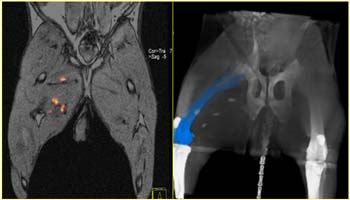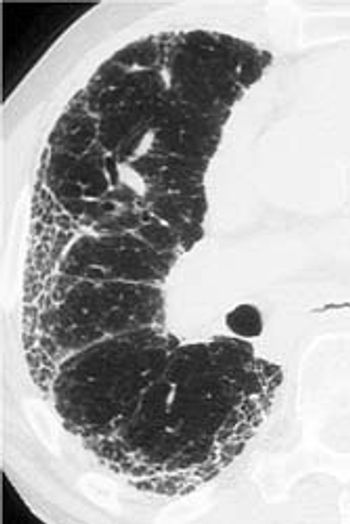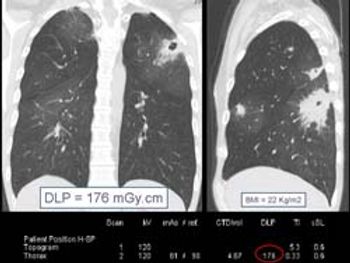
Seriously injured patients have a better chance of surviving multiple trauma when they are evaluated in the emergency room with whole-body CT, according to a study of more than 4500 cases from Germany.
For years, high radiation dose exposure has been the bogeyman that kept the cardiac CT triple rule-out exam for chest pain from widespread application. That concern has been addressed with the use of radiation dose reduction techniques, according to a Thomas Jefferson University study.

Seriously injured patients have a better chance of surviving multiple trauma when they are evaluated in the emergency room with whole-body CT, according to a study of more than 4500 cases from Germany.

InSight buys two Boston area centers

The American College of Radiology Imaging Network will expand its research scope beyond cancer to add applications that advance clinical care in areas such as neuro and cardiovascular imaging.

More than eight years of data from nearly 500 patients suggest that frequent monitoring with CT to look for complications after endovascular repair of abdominal aortic aneurysms is unnecessary and that it could be done instead with ultrasound.

The CT imaging rate for pregnant women at two hospitals affiliated with Brown University’s medical school grew at an explosive 25.3% annual rate from 1997 and 2006, while medical imaging involving ionizing radiation for this population more than doubled.

Plastic surgery may have some early roots. German physicians have scanned the bust of Queen Nefertiti of Egypt with CT, showing marked differences between an inner core -- that more accurately depicts the queen -- and the outer layer where her nose bump is smoothed and her wrinkles are erased.

Nuclear physicians praised the Centers for Medicare and Medicaid Services’ decision to expand Medicare coverage of PET scans in the initial treatment strategy of most solid cancers and myeloma. More than a third of Medicare patients will now be able to get PET scans without going through the National Oncologic PET Registry.

The debate between GE and Bracco over GE’s marketing of its Visipaque contrast agent continues despite a U.S. District Court finding that GE used false advertising to win sales for the x-ray contrast agent.

Inflammation of the upper airways is most often due to the common cold. CT and MRI show complexparanasal sinus anatomy.

Other headlines:Digirad readies SPECT/CT for U.S. marketSiemens prepares Flash for ACCLantheus plans to spotlight microbubble benefits

Nuclear medicine advocates enlisting the help of Congress have forced the Department of Energy to continue to fund basic research for radioisotope and imaging instruments design, despite DOE plans to use its scientists to develop nuclear imaging tools for biological and environmental applications.

Micronodules, tree-in-bud appearance, consolidations, cavities, bronchiectasis, and lobular consolidations are frequent CT abnormalities of extensively drug-resistant tuberculosis.

Potential deadly traumatic pneumothoraces can be measured in the emergency room with a computer-aided volumetric technique that helps move patients from diagnosis to treatment many times faster than conventional visual assessments of the condition with multislice CT.

Simple physician checklists, diagnostic decision-support systems, or second looks at medical imaging exams could help to reduce the estimated 40,000 to 80,000 hospital deaths in the U.S. from diagnostic errors.

Using biotechnology developed from fireflies and seaweed, Johns Hopkins researchers are developing radiopaque stem cells for targeted delivery of therapy in patients with peripheral arterial disease. The technique may allow guidance and tracking of stem cell injections meant to grow new blood vessels and offer a way to confirm therapy response.

A CT-based lung cancer screening strategy that combines tumor morphology and tumor doubling times to evaluate cancer risk is producing good results, according to interim data from a Dutch-Belgian screening trial presented at the ECR.

Mountaineering metaphors provided the framework for Sunday’s Josef Lissner honorary lecture: Ode to the liver.

Coughing, shortness of breath, chest pain, chest tightness, and an abnormal breathing pattern are common indications of lung disease. The question is which one?

Other headlines:Philips offers CT and MR customers productivity boostMedicsight upgrades ColonCAD

High calcium scores are commonly considered a risk factor for coronary stenosis, but even a zero calcium score doesn’t assure coronary health in a high-risk population, a pair of papers presented Monday concluded.

CT and MRI have a vital part to play in cases of head and neck trauma, but it is important to know which modality to use under the clinical circumstances, according to speakers at Friday’s opening session of the minicourse on major trauma.

MR systems used in cardiovascular imaging will inevitably have higher field strengths, including 7T, according to a leading cardiac radiologist.

Other headlines: TeraRecon upgrades Aquarius iNtuition at ECR 2009iCAD shows expanded CAD portfolio GE tunes into European concerns

CT and MRI have a vital part to play in cases of head and neck trauma, but it is important to know which modality to use under the clinical circumstances, according to speakers at Friday’s opening session of the minicourse on major trauma.

Multislice CT continues to spawn new applications in lung imaging, such as software techniques that allow depiction of airway morphology abnormalities in the prevalent chronic obstructive pulmonary disease. But radiologists are still not doing enough to cut the radiation dose while using the latest imaging tools, resulting in unnecessary and potentially hazardous excess exposure, according to some experts.